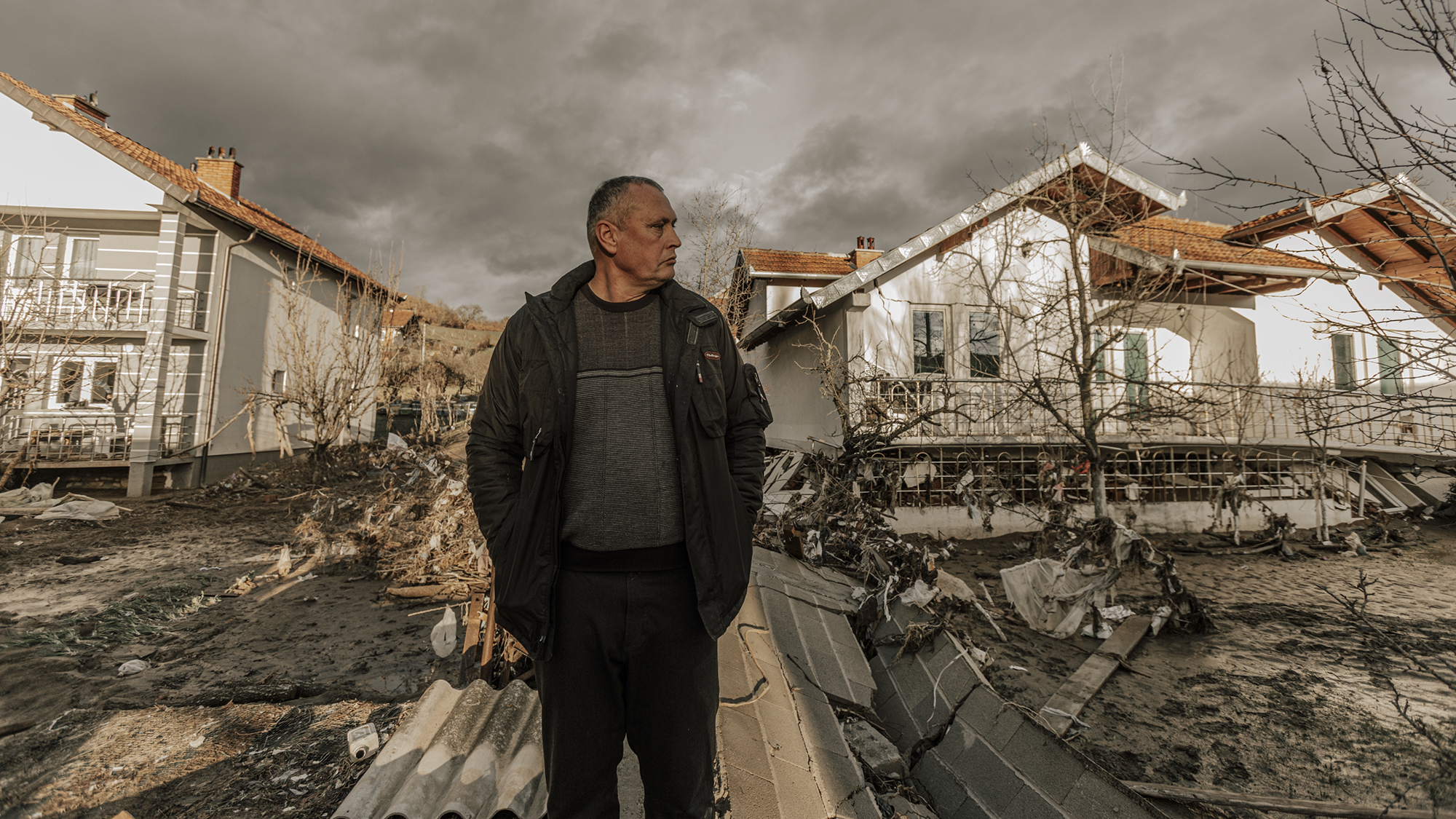

Floods are taking Kosovo by surprise
Climate change, riverbed degradation and too much concrete threaten unprepared municipalities.
19/09/2023
Across Kosovo and the Balkans more broadly, news reports about floods have become common, especially during the spring and summer months.
Cities in Kosovo have been flooded twice this year. In January 2023, floods damaged Skenderaj, Mitrovica, Podujeva, Istog and Klina. In Skenderaj alone, flood damage was estimated at close to 12 million euros and 300 residential houses were damaged.
In June several cities were flooded again, with Peja facing the most severe damage. A woman and her five year-old son lost their lives after their backyard in the Asllan Qeshme neighborhood was flooded. After several hours of searching, the woman’s body was found far from her backyard, where the water had carried her.
Flooding has become more frequent due to climate change. Since 1981, global average temperatures have increased at a rate of 0.18 degrees per decade. Today, the earth is 1.2 degrees warmer than in the pre-industrial era. Changing temperatures have disrupted the ecosystem and resulted in more extreme weather with increased droughts in some places and excessive rain in others. The increasing frequency of floods is mentioned in the 2019-2021 Climate Change Strategy Action Plan drawn up by the Kosovar government. The Action Plan states that the effects of climate change are already evident in Kosovo.
Climate change has also made it difficult to predict natural disasters. For example, hydrology — the study of the water cycle — can help make big-picture predictions about the frequency and intensity of flooding in a given place. In Kosovo, January 2021 floods reached levels last seen 42 years earlier in 1979. Then, against predictions, the same level of flooding occurred again only two years later in 2023.
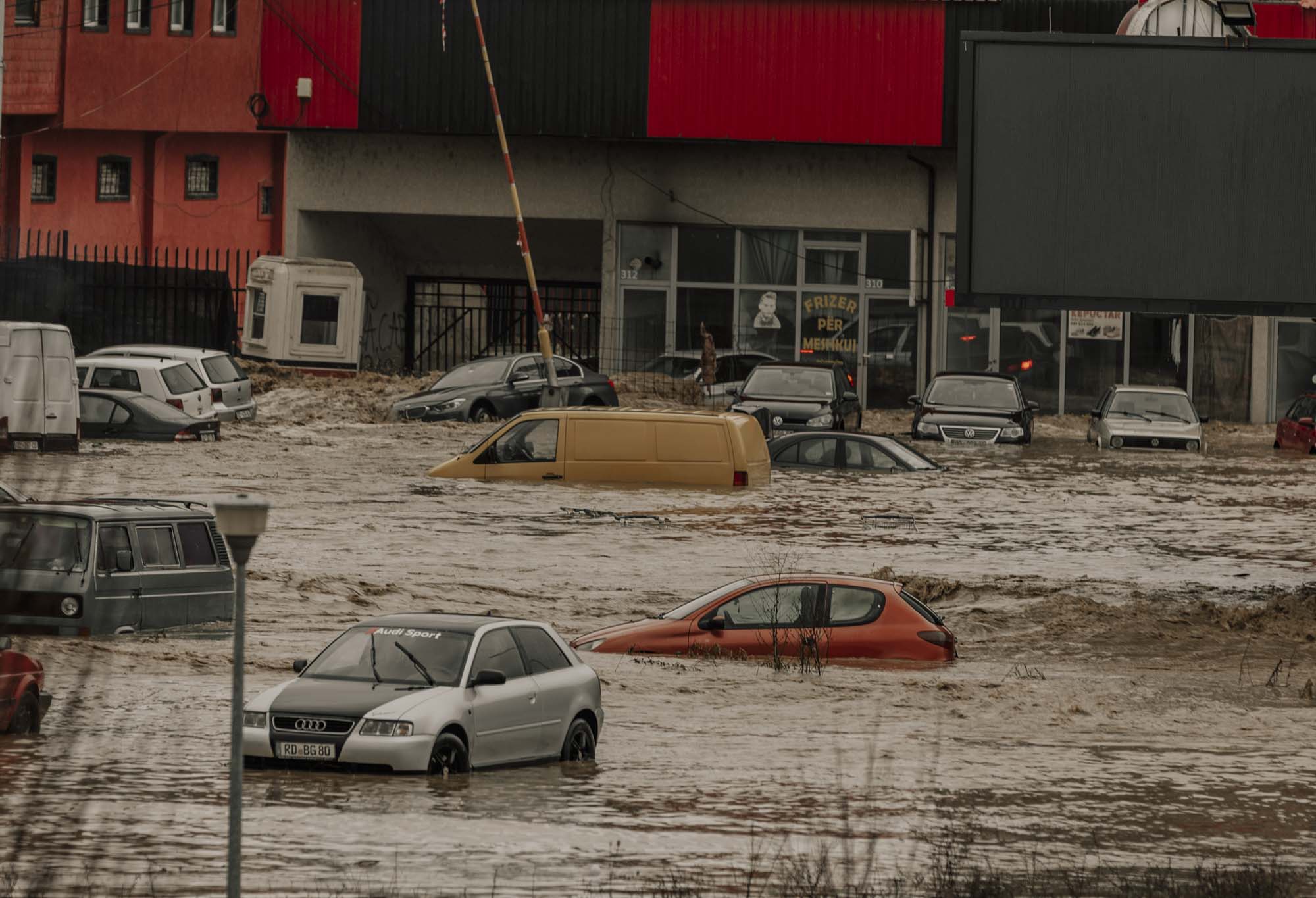
Flood risk is not only a result of climate change; it is exacerbated by the degradation of riverbeds and poor infrastructure, due to the concretization of green spaces and river basins.
There are several Kosovar institutions at the central and local level that deal with flood risks. The Hydro-Meteorological Institute of Kosovo (HMIK) and the Emergency Management Agency (EMA) are primarily responsible at the central level for predicting, issuing warnings about and managing floods.
The Regional Authority of River Basins, within the Ministry of Environment, Spatial Planning and Infrastructure (MESPI), is responsible for drawing up flood risk maps for Kosovo’s river basins, but none of the maps are finished.
The Preliminary Flood Risk Assessment was drawn up by the ministry in 2021 and outlines the flood risk assessment for all river basins. According to MESPI, the Flood Risk Map and Flood Hazard Map should be completed by the end of the year. This map is the result of data collected over the years from institutions and will clearly present which regions are at risk of flooding if there is heavy rainfall.
After the floods in Peja, Kosovar Prime Minister Albin Kurti promised a new strategy in response to climate change as the previous one only covered the years 2019-2021. Kurti said that an investment of 1.3 billion euros in infrastructure is needed to adapt to climate change.
But the primary responsibility for these issues lies with each municipality, which is supposed to prepare and implement risk assessment and emergency response plans as required by the Law on Protection against Natural and other Disasters.
The unexpected floods in January and June of this year showed that the responsible institutions are not fulfilling their duties.
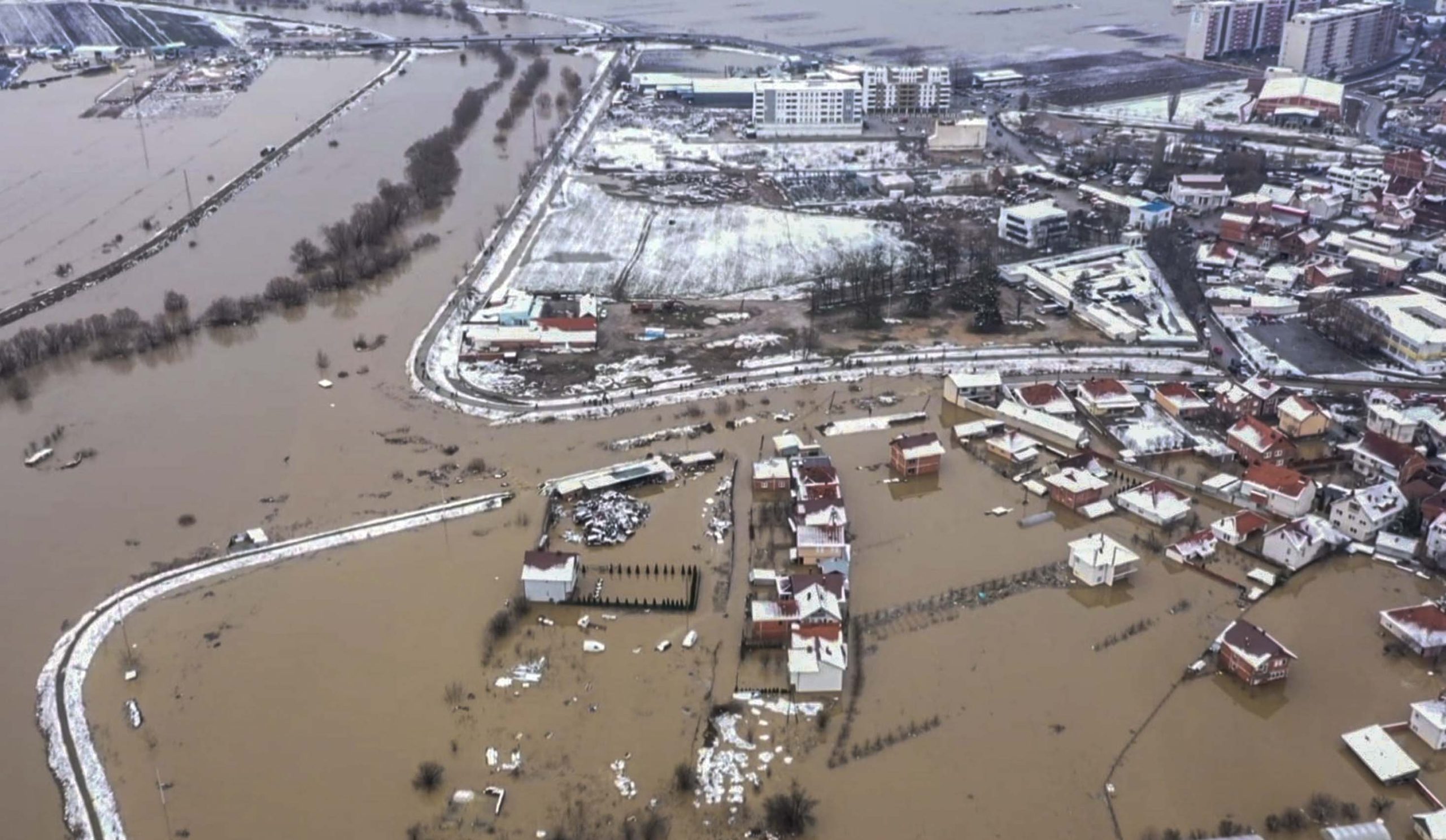
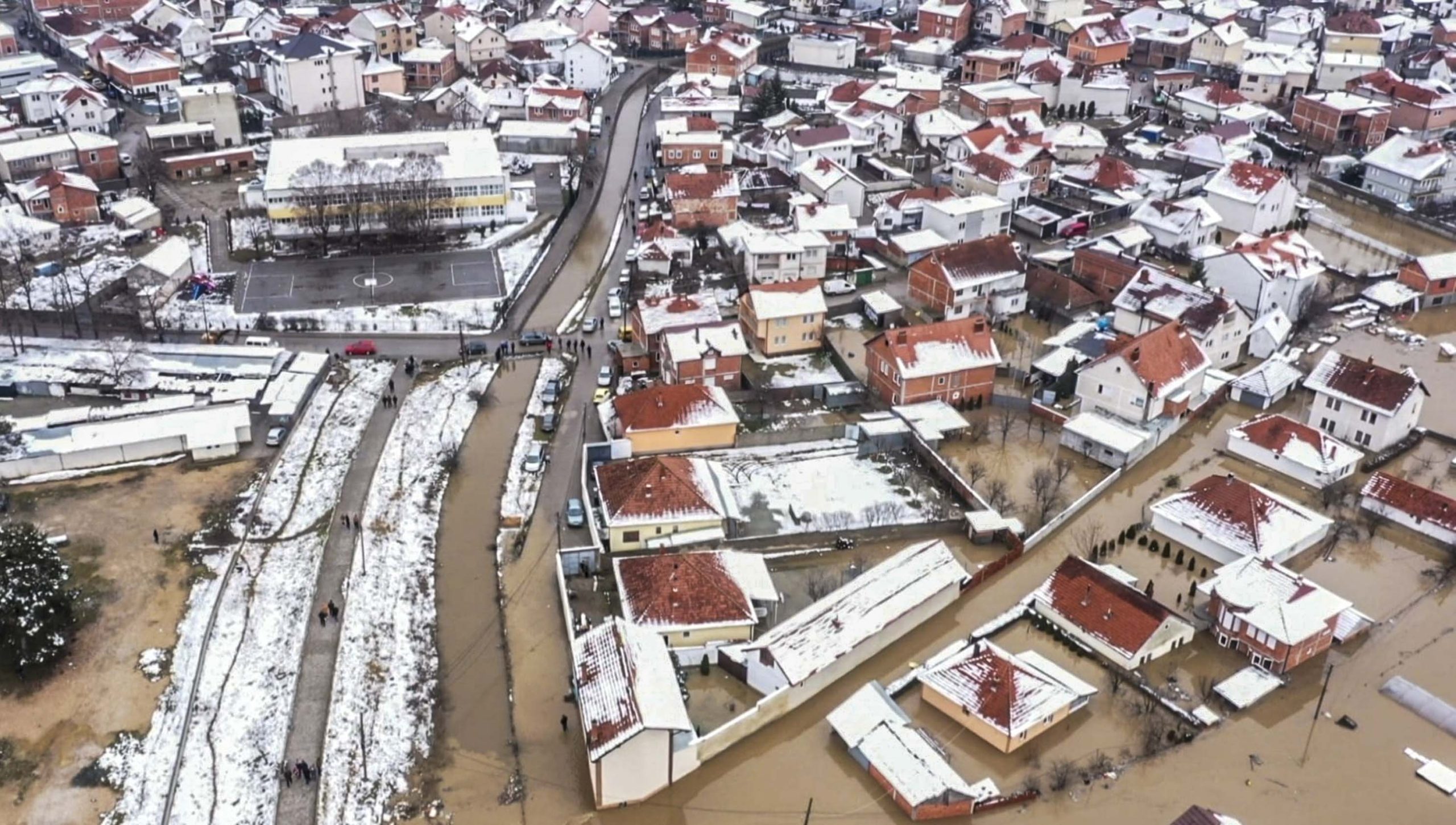
Human factors are increasing the risk of flood damage
Kosovo’s waters flow in nearly 50 rivers and hundreds of streams, which are divided into four river basins: White Drin, Ibar, Morava e Binçës and Lepenac. The White Drin, at 110 kilometers including streams and tributaries, is the longest river in Kosovo.
Since high mountains surround Kosovo, the waters from the mountains flow into the lower areas.
Two types of flooding threaten Kosovo: urban floods — when rivers flow directly into cities — and river floods — when rivers exceed the capacity of the river bed and overflow. Increased rainfall due to climate change directly affects the capacity of riverbeds to hold enough water to prevent flooding.
According to Lavdim Osmanaj, an expert in hydrotechnics, climate change can be observed when the amount of precipitation that normally falls in a month falls within just one hour. This happened on June 24 of this year in Peja.
Within 64 minutes, 56.4 liters of rain per square meter fell in the city of Peja. According to experts, there is no infrastructure that can handle this amount of water. Peja’s Lumbardhi River and water canals overflowed.
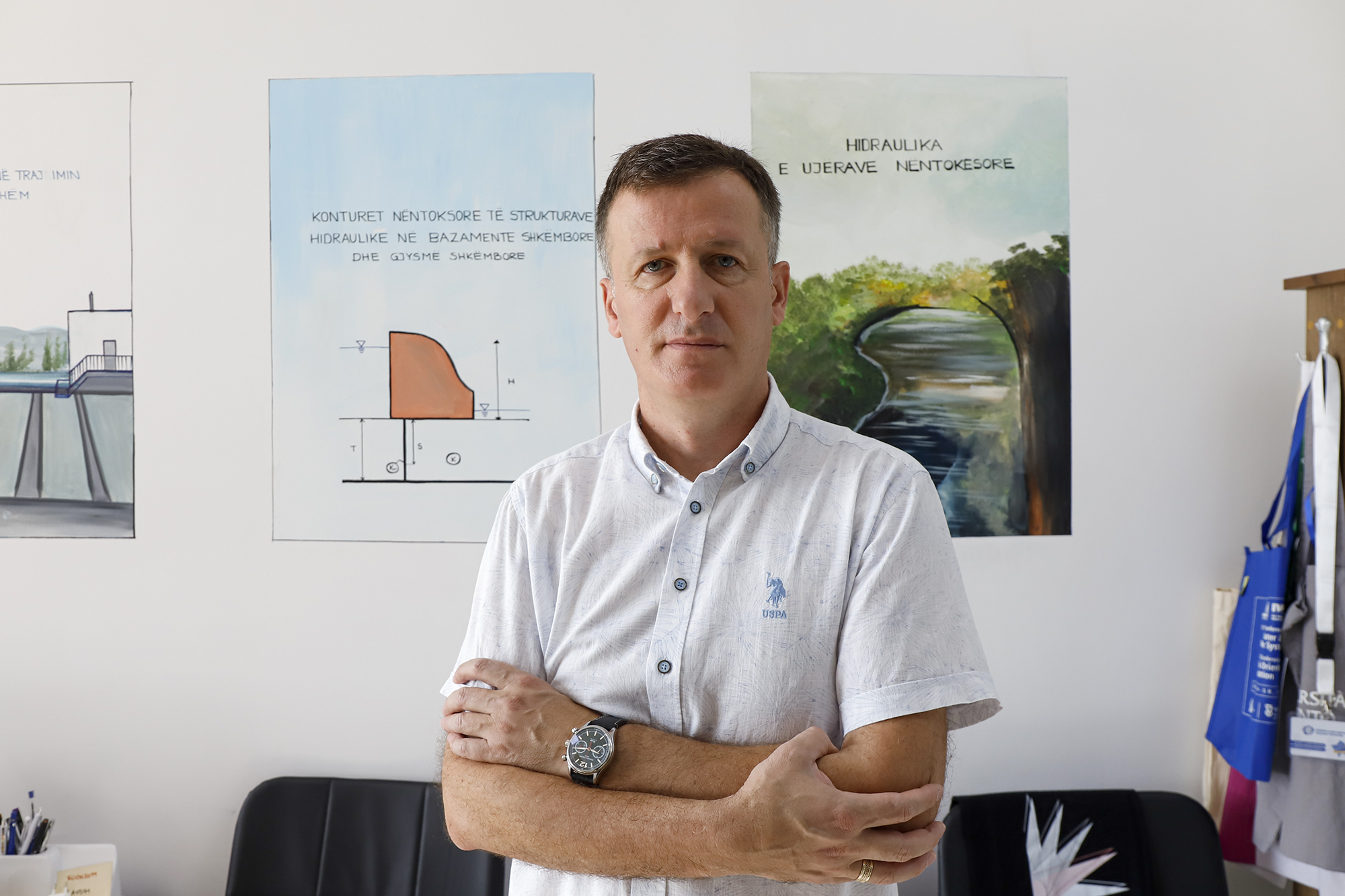
“It was a typical urban flood. According to my calculations, this amount of rainfall in such a short time should only happen once in 70 years,” said Osmanaj, as he showed his data models.
The data for floods in Kosovo does not go back far. The Hydro Meteorological Institute’s records only date back to the floods of 1979, when the whole country was hit.
“There were also floods in 1963, but we have no records, though there are also some photographs of Kaçanik around 1930,” said Bashkim Kastrati, a hydrologist at HMIK, who has closely observed Kosovo’s rivers since after the war.
Every year HMIK issues reports which it calls hydrometeorological yearbooks. Kastrati has compared the yearbooks from 1979 and 2021 and concluded that this level of flooding occurs approximately once every 50 years.
This institute receives data from 35 static hydrological stations on the main rivers and their tributaries across Kosovo. Half of these stations transmit data to the institute periodically online. Occasionally, the institute receives notifications regarding changes in river water levels.
“Online monitoring stations are very important when it comes to floods. We see the trends of the water levels in real time, connecting it with the meteorological factor, with the forecast here and in the region. Since waters have no borders, rivers flow in from neighboring countries,” said Kastrati about the data, which is automatically sent to the European Flood Awareness System. This system collects data from all over Europe and notifies countries that are at risk from floods. The same happens with Kosovo.
When hydrologist Kastrati receives these notifications he processes the field data in flood in calculation models.
“Only after I am certain do I write the flood warning that goes directly to the Emergency Management Agency, to the media outlets and to members of the public,” he said, adding that notifications can warn of floods two days in advance, 24 hours earlier, or several hours before, but there are also floods that cannot be predicted.
After HMIK warns the EMA, the emergency agency raises the alert to municipalities, as the first institution that will handle the floods. When floods can no longer be managed at the local level, the EMA coordinates actions between central and local institutions.
Although this notification system works, the director of the Preparedness Division at the Emergency Management Agency, Hajriz Sejdiu, said that Kosovo lacks two alarm systems. According to him, Kosovo has only one segment of the Early Warning System, if this system were complete, it would be significantly more sophisticated.
In addition, Kosovo also lacks a public address voice alarm system. He added that there is no unified radio communication network between response teams such as police, firefighters and ambulances. All three institutions lack real-time communication between themselves.
In Kosovo, the human factor also significantly contributes to the increase in flooding.
According to hydrotechnical engineer Osmanaj, some other causes of floods are: overbuilding on open canals; litter in rivers; deforestation, which causes landslides and flooding; the lack of maintenance of sewer systems; and the combination of fecal sewage channels with storm drain runoff.
The death in Peja happened in a house built next to the stormwater channel. Littering and blockages caused the stormwater channel to overflow, flooding the surrounding area.
The maintenance of stormwater channels and cleaning of riverbeds is often not done properly. Hydrologist Bashkim Kastrati, who monitors riverbeds daily, has seen the damage this causes to rivers.
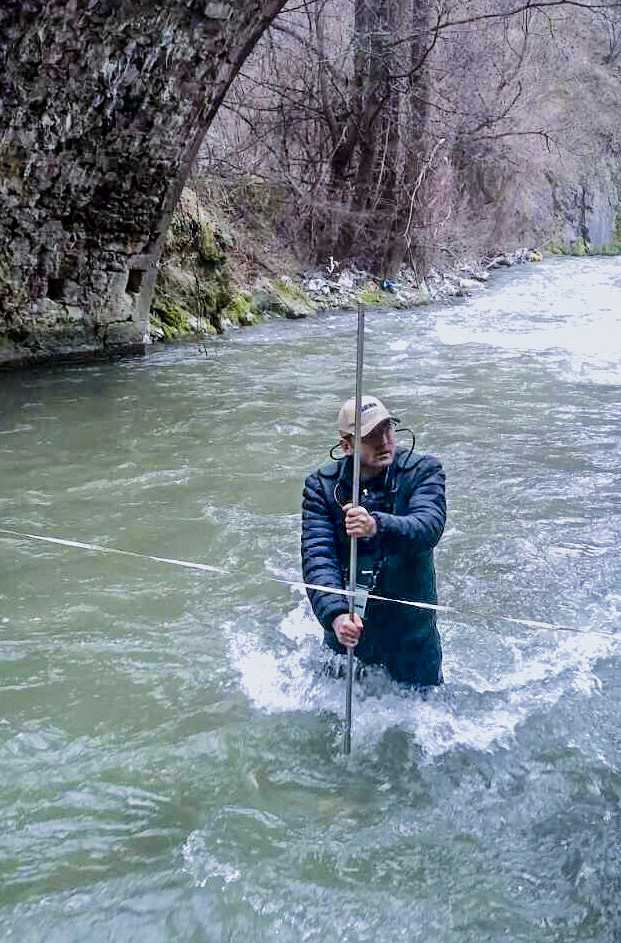
“Sometimes they pull out the trees by the roots [near the riverbeds]. And after this we can expect for the soil to fall completely because there is nothing to hold it. This causes a lot of damage,” he said.
If you wander through the cities of Kosovo, you can see many stormwater channels and riverbeds that are completely concreted over. Water moves quickly through concrete as there are no stones or trees to hinder its pace and it floods the lowest areas. The concretization of the riverbeds was done by the government, nominally to prevent flooding.
According to Osmanaj, the regulation of rivers in recent years has been carried out without hydrological analysis or flood analysis. “We can see the problem now, on the ground, with the flooding,” he said.
According to Kastrati from HMIK, when the concrete storm runoff channels are planned there is rarely interest in monitoring how much rain falls in Kosovo so that the channels can be built accordingly.
“We have rain gauges, which designers and engineers should have to know the water volume when designing channels. But little attention is paid to that. I think that awareness often requires an event to trigger it. After these last floods, awareness has been raised,” said Kastrati.
In urban areas, floods are also happening more often due to urbanization. When neighborhoods with houses are demolished to make way for multi-story buildings, the land under the concrete and asphalt is no longer able to absorb water during storms, causing increased flooding and runoff.
This is also noted by hydrologist Sokol Xhafa, who is the technical director at the Regional Water Company Prishtina. According to him, the lowest areas suffer most in these cases.
“The roofs are usually rolled roofing, or whatever the roof material, all the water goes through the gutters into the sewer system and the ground does not absorb anything. Then the lower areas suffer because the water ends up there,” said Xhafa.
Flood damage has also increased due to the concretization of river basins.
The Ministry of Environment and Spatial Planning has not responded to questions about the conditions of river basins. The ministry’s Inspectorate has also not provided requested information about inspections or decisions about demolitions or fines.
According to Hajriz Sejdiu from the EMA, who has monitored floods for 10 years, the focus should be on prevention more than reaction. Floods can even occur in places with stable infrastructure. But factors such the concretization and degradation of river beds, construction in high risk areas and asphalting green spaces increase the damage that floods cause.
Everyone’s unprepared for floods
Every municipality in Kosovo has now experienced flooding. But as the first line of response, the municipalities are still unprepared.
“We have an overview of how many municipalities are prepared for each phase — their preparation is lacking,” said Sejdiu from the EMA.
The municipalities have been unprepared for a long time. Ten years ago, the hydrologist at HMIK, Bashkim Kastrati, called the mayors of Kosovo’s municipalities on the phone and asked them to provide a contact person in case of flood warnings. Only half of them responded to the request.
Some of the municipalities in Kosovo do not have a Municipal Directorate for Protection and Rescue, which would deal specifically with natural disasters. According to Sejdiu, when municipalities have directorates, they exist only as a phone number.

“With the effects of climate change, it is impossible for a municipality to be managed without such a professional directorate. Most of them do not have such directorates, and the ones they have are lacking, with non-professionals and their budget is often transferred to other directorates,” said Sejdiu, who added that the EMA has a training center where municipalities can send personnel and volunteers, but interest is low.
Kosovo’s municipalities are also drafting a Detailed Atmospheric Waters Plan, which would include everything about atmospheric waters, from its collection to its management and flood prevention. According to the engineer Osmanaj, no municipality in Kosovo currently has such a plan.
According to the Law on Protection from Natural and Other Disasters, each municipality must have an Emergency Response Plan and Risk Assessment.
All the cities that were flooded during January and June of this year have not completed these documents, they are awaiting approval, in revision or being drafted. Possessing an emergency response plan, which is based on risk assessments, would enable the municipalities to have a clear plan for protection and rescue in the face of disasters.
Fires, floods and droughts are also included in the risk assessment. These documents also contain scenarios detailing how to respond. According to Sejdiu, this practice also requires evacuation and reaction training.
Sejdiu has witnessed municipal directors and mayors hinder emergency teams in carrying out their work even when these documents exist.
“Their role in the emergency headquarters is to send deliveries of food, water or other equipment for the teams in the field. It is an unorganized mess, with a lot of stress and no results,” he said, while recalling that he had witnessed this situation in Skenderaj and Mitrovica during the recent floods.
On January 19, 2023 serious flooding occurred in Skenderaj as the Klina River and the Përroi i Keq overflowed. Skenderaj did not have an Emergency Operational Plan or Risk Assessment Plan. According to the Skenderaj municipality, it is in the process of drafting the Emergency Operational Plan, which is expected to be approved soon by the Municipal Assembly. The Risk Assessment Plan has not yet been completed.
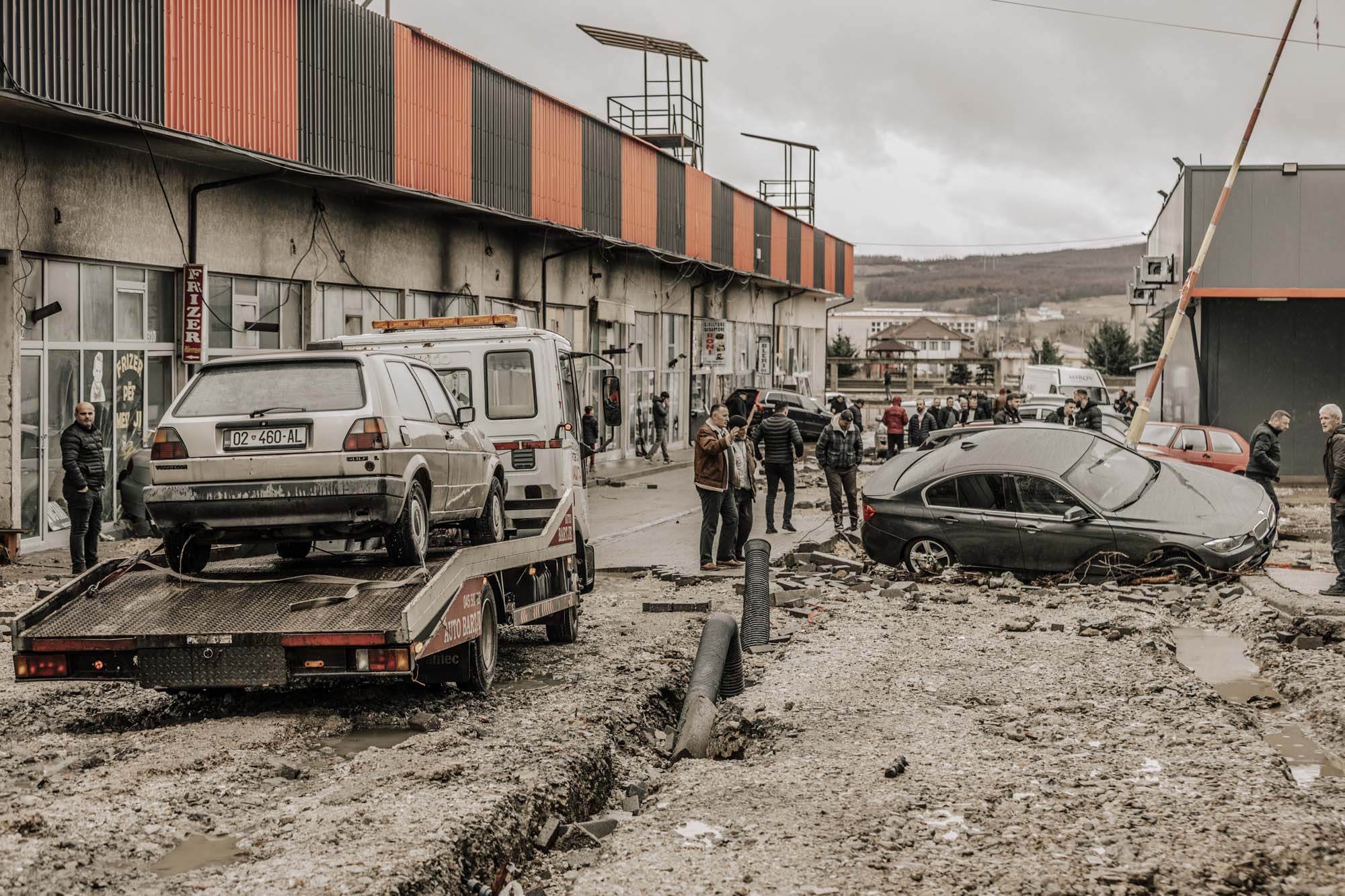
In June, the Tërstena and Podranqa rivers flooded, as well as other rivers in Vushtrri. Ferit Idrizi, mayor of Vushtrri, followed the legal path and organized the emergency response and formed the Emergency Headquarters, which he led himself. This municipality had a Risk Assessment Plan, but the Emergency Response Plan was under revision. The damages from the floods were considerable, but the municipality of Vushtrri does not yet have a monetary estimate.
Mitrovica has both documents under review, which are required by the Law on Natural and Other Disasters. When there are heavy rains, Mitrovica is at risk from flooding from the Ibar, Trepça and Sitnica rivers. The damages from the recent floods in January are estimated to cost 8 million euros. The blocked part of the Lushta River is a critical point in the city and the municipality has already taken measures to clean it.
In Rahovec many smaller streams flow into the White Drin. When heavy rains cause the river to swell, the resulting floods inflict significant damage in the city and nearby villages, which are known for their agricultural crops, primarily grapes. In January 2023 the damages reached nearly 104,000 euros. The most severe impact was felt during the grape harvesting season, as the harvest was diminished due to the floods.
Rahovec has a history of flood damage due to its low elevation. However, according to the municipality, streams are cleaned frequently and four new drainage canals are being constructed to prevent flood damage. According to experts, the weak points are illegal constructions, illegal dumping of inert waste, and narrow bridges.
Meanwhile, the municipality of Peja said it had finished the Emergency Operational Plan and that it is now dealing with the construction of new drainage channels and the cleaning of the existing ones. Other municipalities also said that they are doing the same. But if these actions were done regularly, according to the experts, the floods would leave behind less damage.
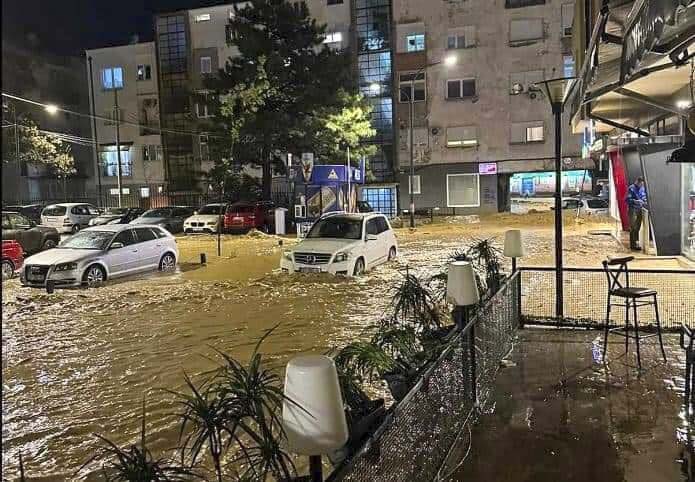
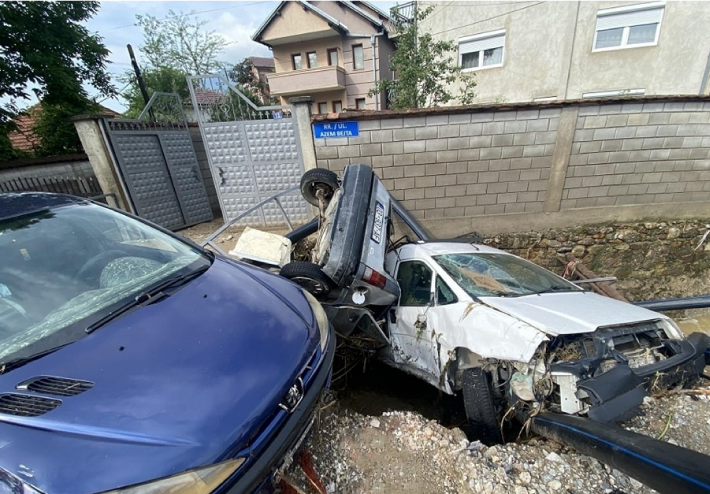
‘When a disaster occurs, everyone is ready to cooperate’
Sejdiu from the EMA said that the post-flood analysis, which would identify gaps and opportunities for improvement, is hardly ever carried out.
“When a disaster occurs, everyone is sensitive and ready to cooperate, but it only lasts for a short period of time. Even the mayors and the central level seem to forget the disaster after a time, and continue on the same course,” said Sejdiu, adding that there should be consequences if the municipalities do not fulfill their obligations.
The EMA inspectorate should ensure compliance with the Law on Protection against Natural and Other Disasters, which also oversees fines for institutions that do not comply with the law or report disasters. But the inspectorate is passive.
Whenever disasters happen, the government promises recovery aid. But help is often delayed. The state budget does not have an emergency fund for disasters. The Association of Municipalities of Kosovo requested the creation of an emergency fund after the recent floods, but so far no concrete steps have been taken towards its establishment.
The Ministry of Finance, Labor and Transfers has not answered as to whether the promised funds have been given to the municipalities. Some municipalities have complained that they have not received a single cent.
“Public interest and decision-making lasts for 10 days. Then the intensity reduces. There is no further interest,” said Sejdiu, who will soon retire. He suggested that imposing penalties on municipalities might be the only way to encourage them to prioritize disaster preparedness.
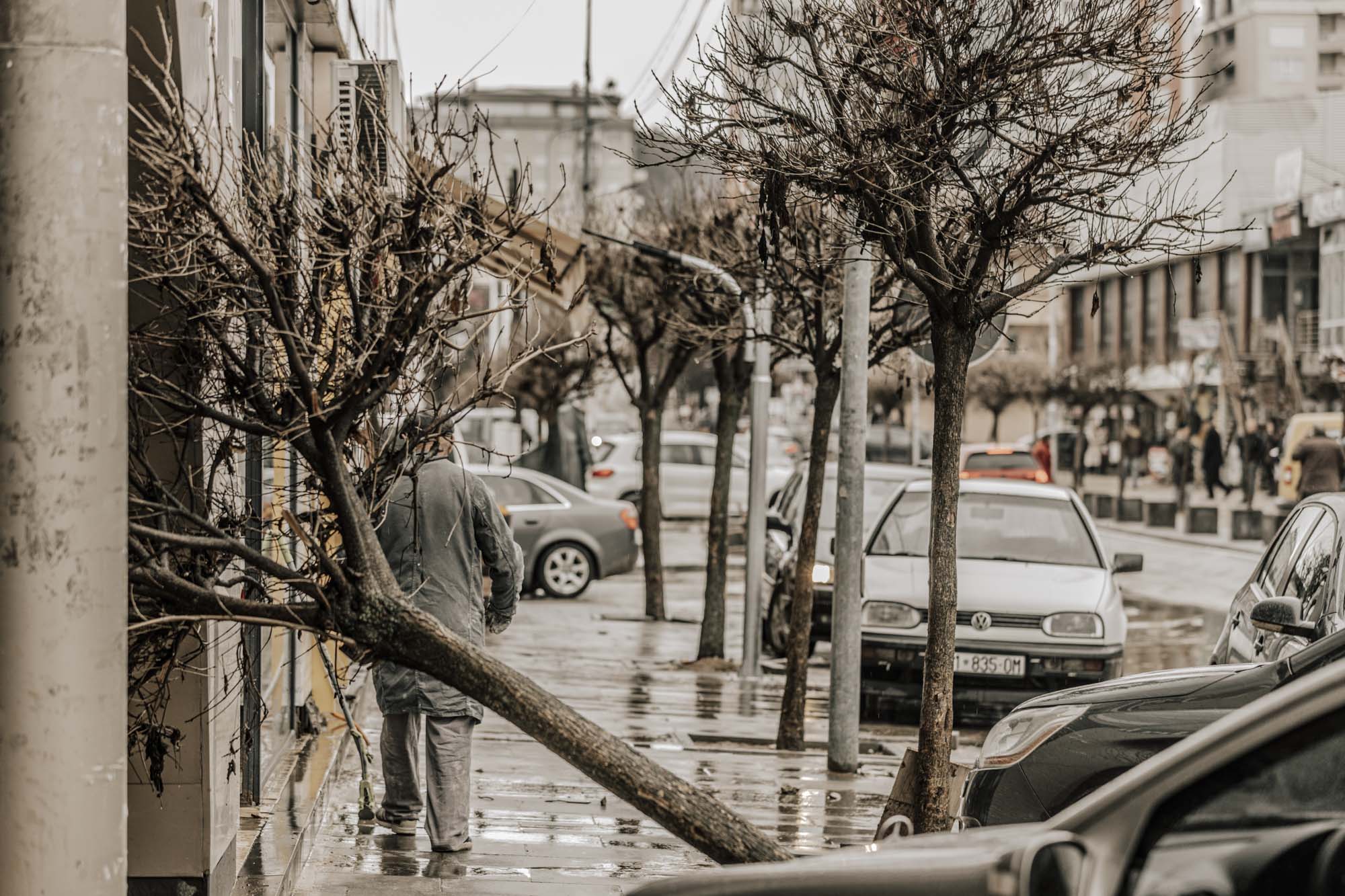
Feature Image: Sefer Aliqkaj.
The content of this article is the sole responsibility of K2.0.
Curious about how our journalism is funded? Learn more here.
